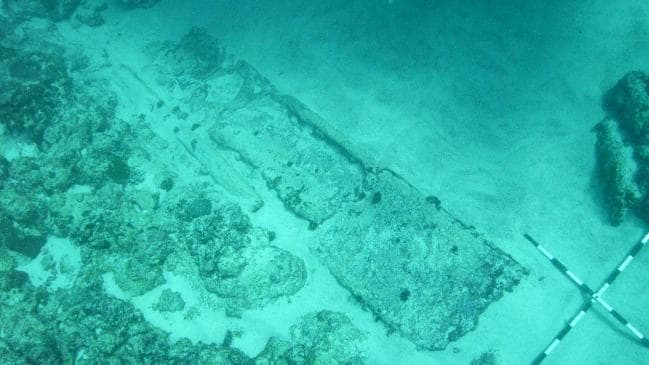
Two shipwrecks found during the hunt for missing flight MH370 in the remote Southern Ocean were identified Thursday as 19th century merchant vessels carrying coal, each crewed by up to 30 people.
The ships were found in May and December 2015 during a search for the missing plane, which disappeared in March 2014 with 239 people on board.
They were around 1,430 miles from the Western Australian coast and 2.5 miles deep.
Experts from the WA Museum were asked by the Australian Transport Safety Bureau to examine sonar and video data of the two wrecks – one of which had a wooden hull while the other was iron.
Speaking to ABC Australia, WA Museum curator of maritime archaeology Ross Anderson said the ships’ identity was determined by analysing both the wreckage and historical records, adding that it was difficult to determine an exact identity due to incomplete research.
“However, we can narrow the possibilities to some prime candidates based on available information from predominantly British shipping sources.”
“For the wooden ship, the brig W. Gordon and the barque Magdala are two possible candidates. For the iron ship the barques Kooringa [1894], Lake Ontario [1897] and West Ridge [1883] are possible, with the West Ridge best fitting the evidence.”
The ship’s wooden hull had degraded over time, leaving behind its coal cargo, metal fastenings, anchors and cleats.
Dr Anderson suggested the ship most likely sank as a result of an event like an explosion, common for 19th-century coal ships.
Early analysis of the site identified a large rectangular metal object about six metres long, which was initially referred to as a ‘mystery chest’.
Dr Anderson said the object has been identified as a water tank, while sonar and video images revealed the ship had two decks and weighed somewhere between 1,000 and 1,500 tonnes.
Several ships have been searching for the MH370 since it went missing, including Havila Harmony, which used an autonomous underwater vehicle to examine one of the sunken 19th-century vessels.
Searches for the missing plane are ongoing, with one by a US firm set to end this June.
A search in the Indian Ocean of over 46,000 square miles between Australia, China and Malaysia ended without success in January of last year despite authorities requesting that it be extended.
Although the plane was never discovered, several pieces of debris were collected from Indian Ocean islands and Africa’s east coast, with at least three pieces confirmed as having come from the plane.













